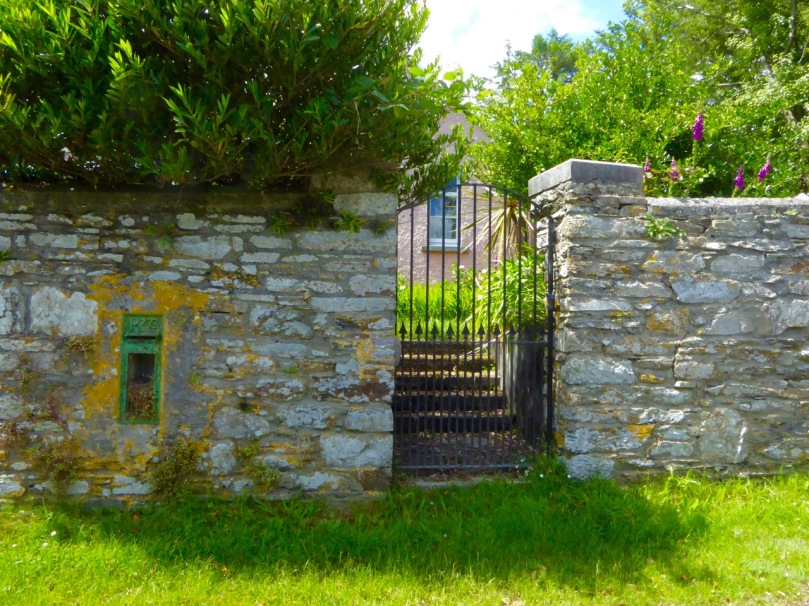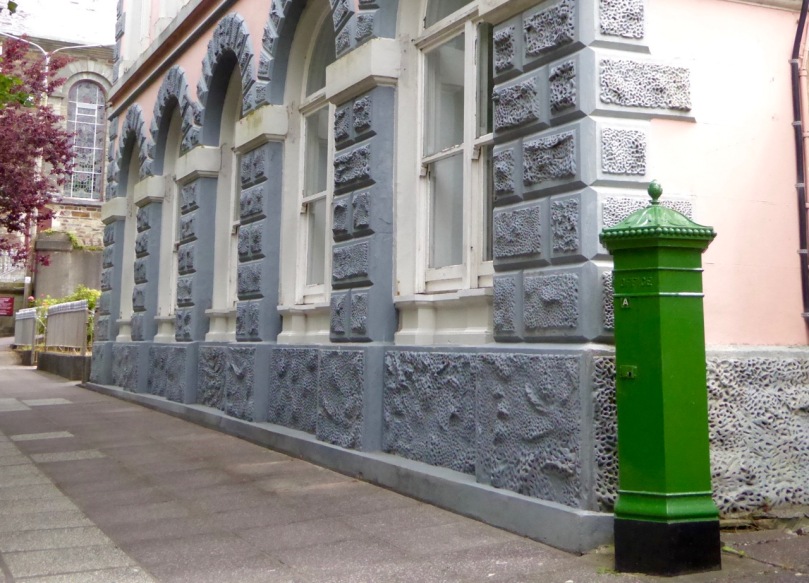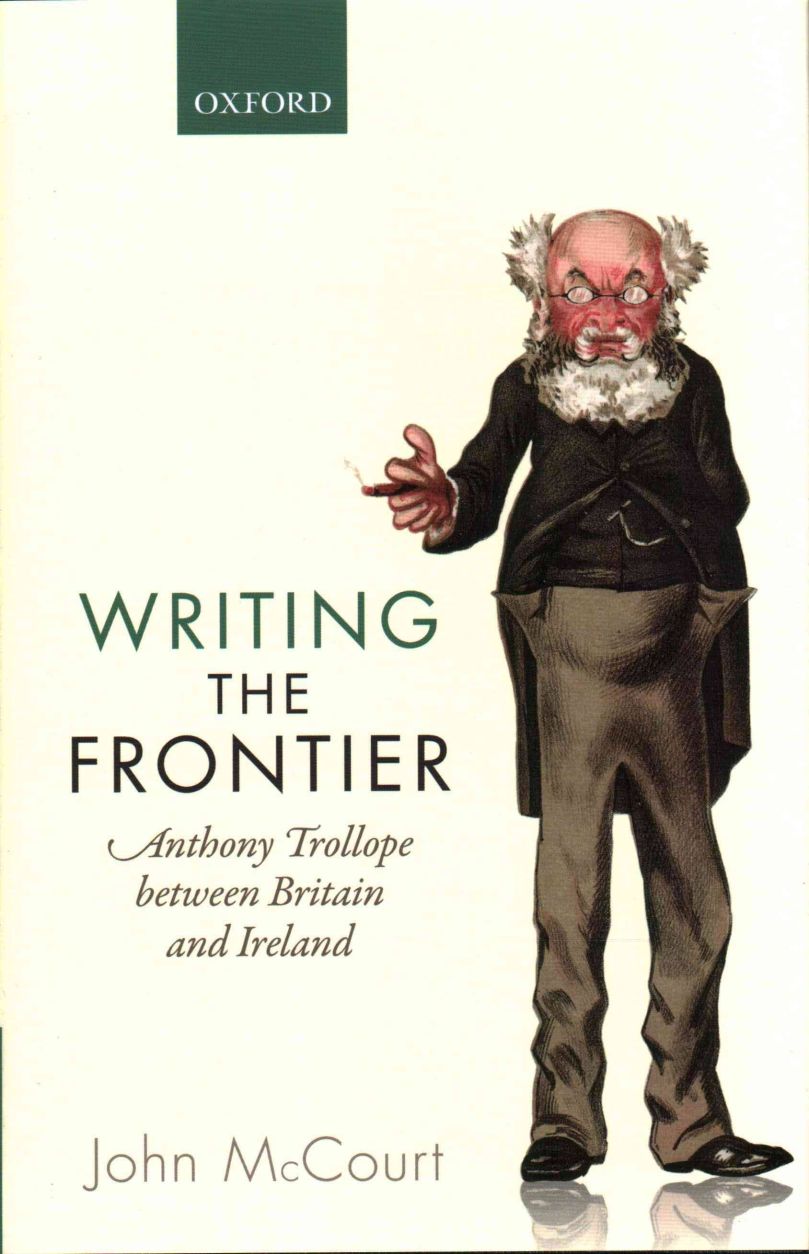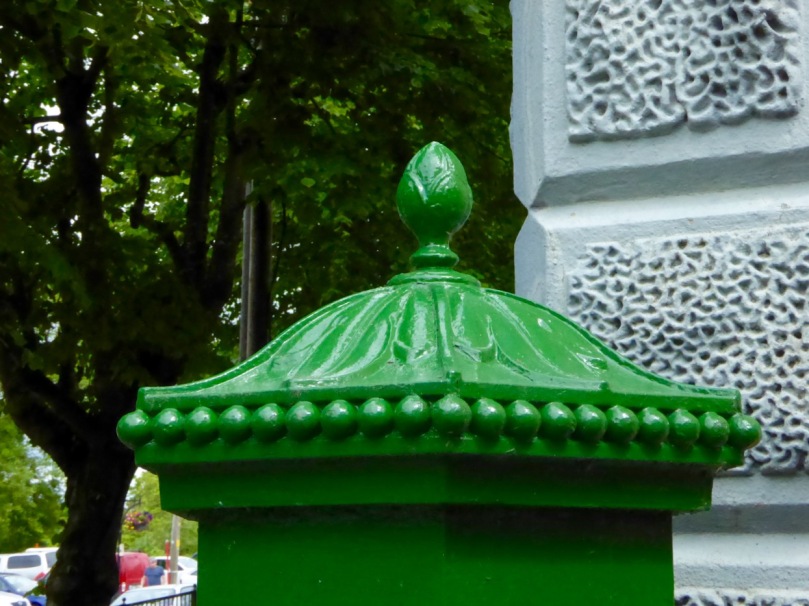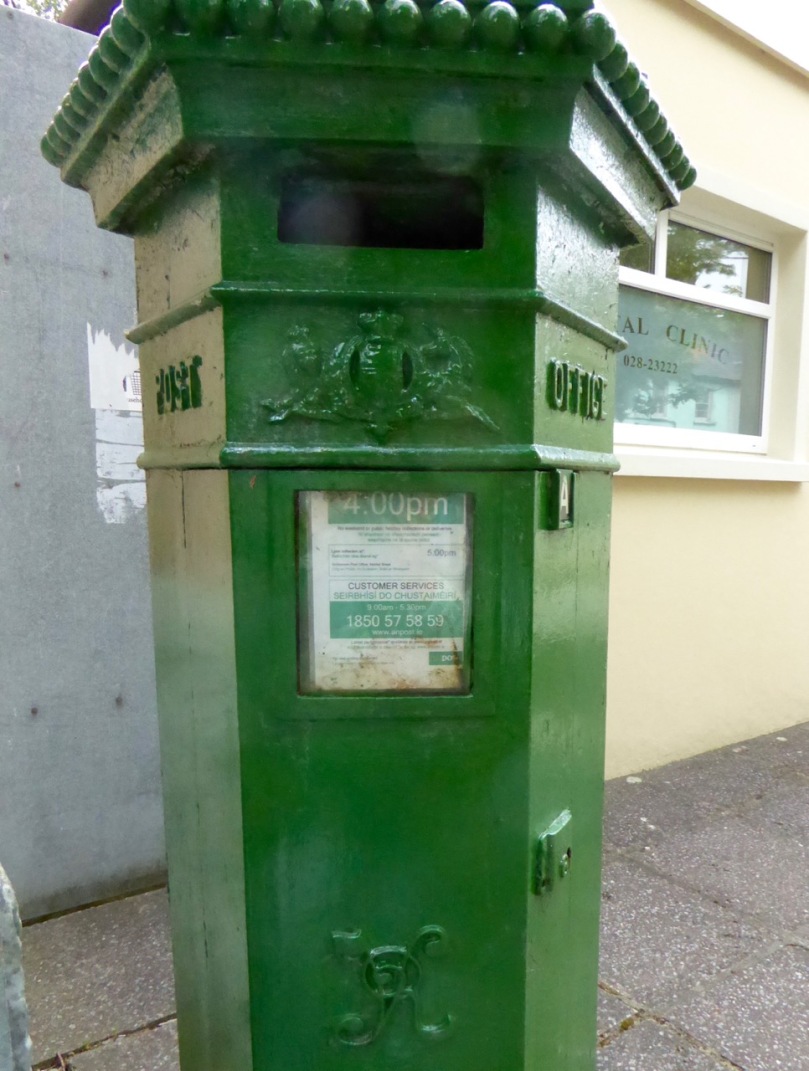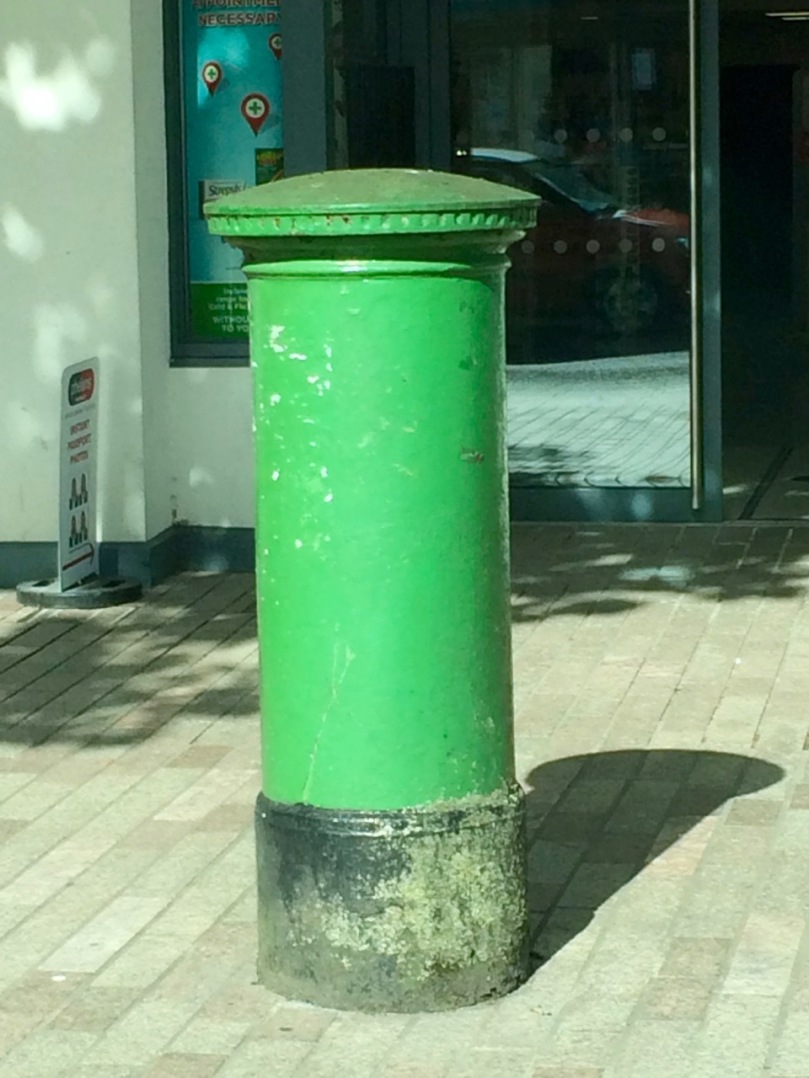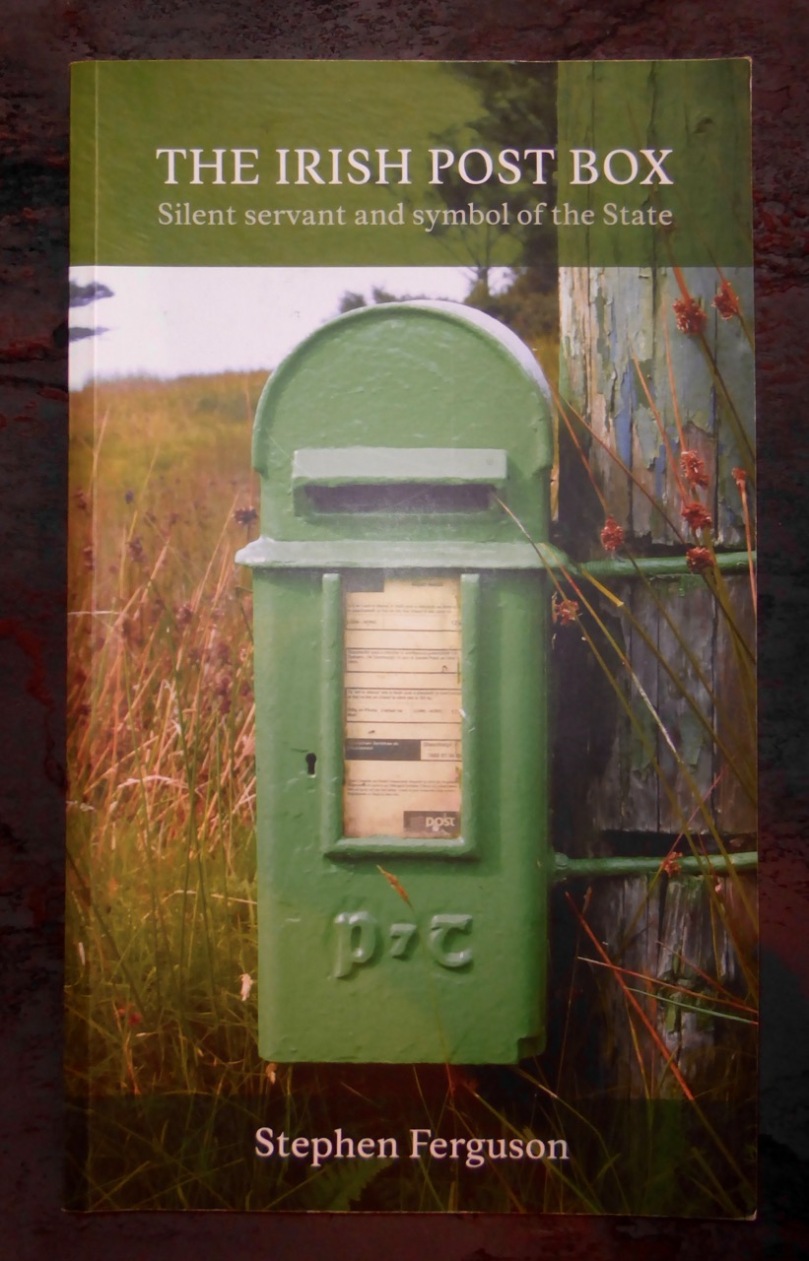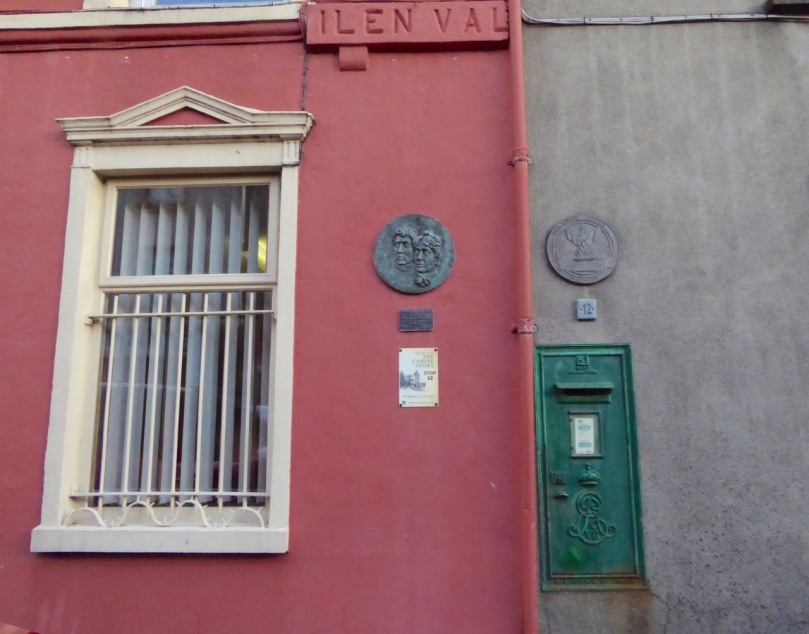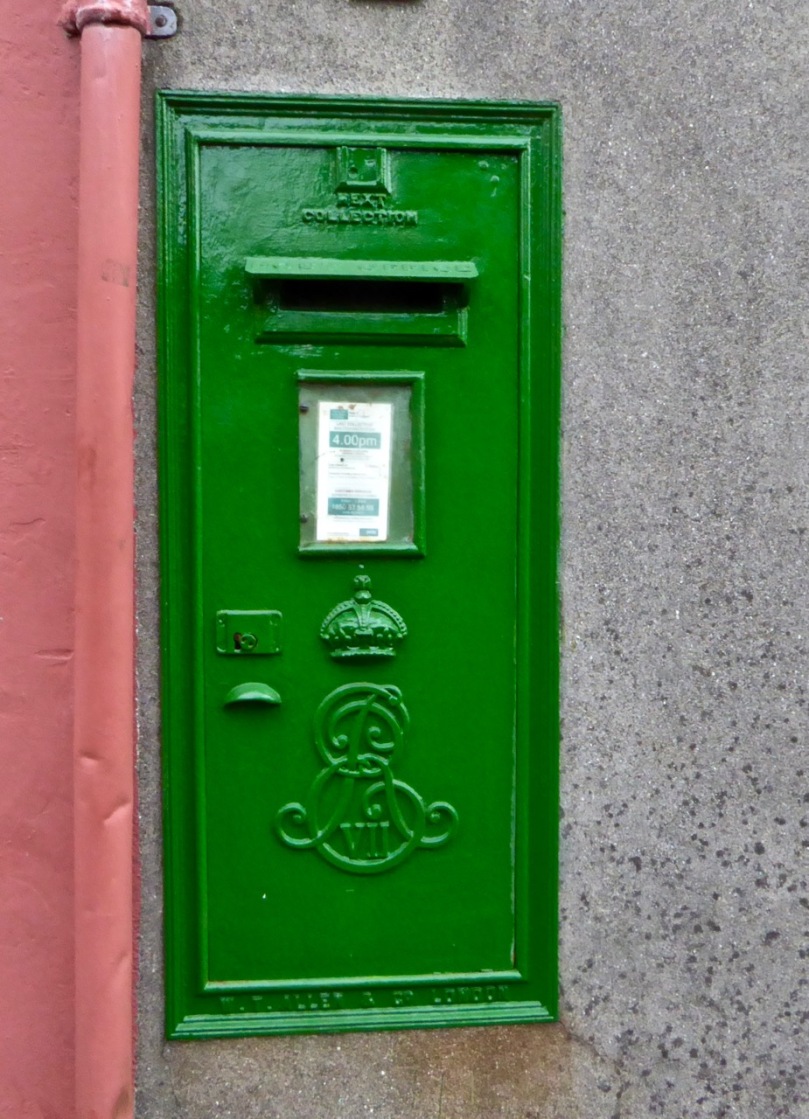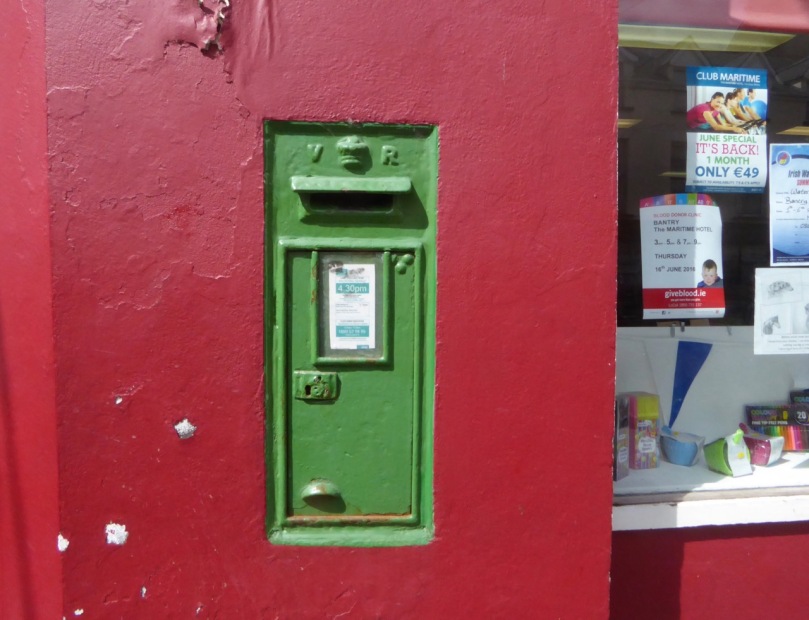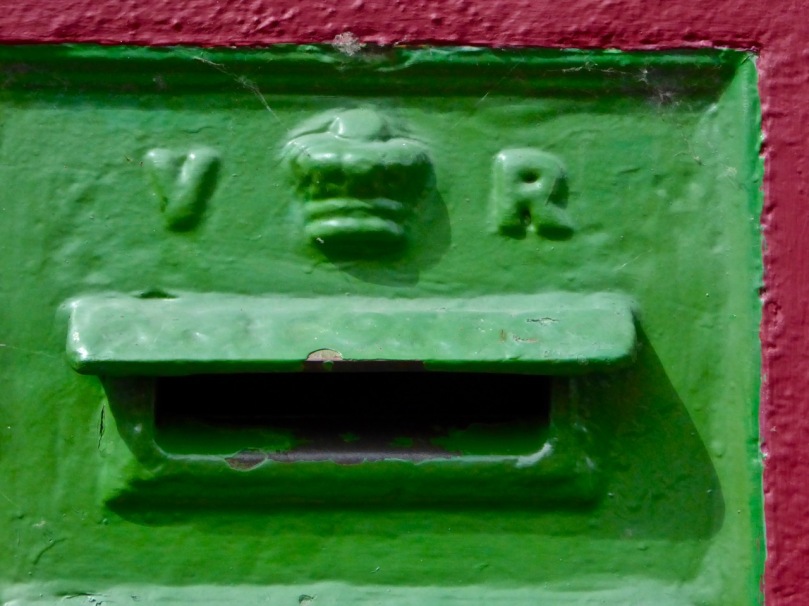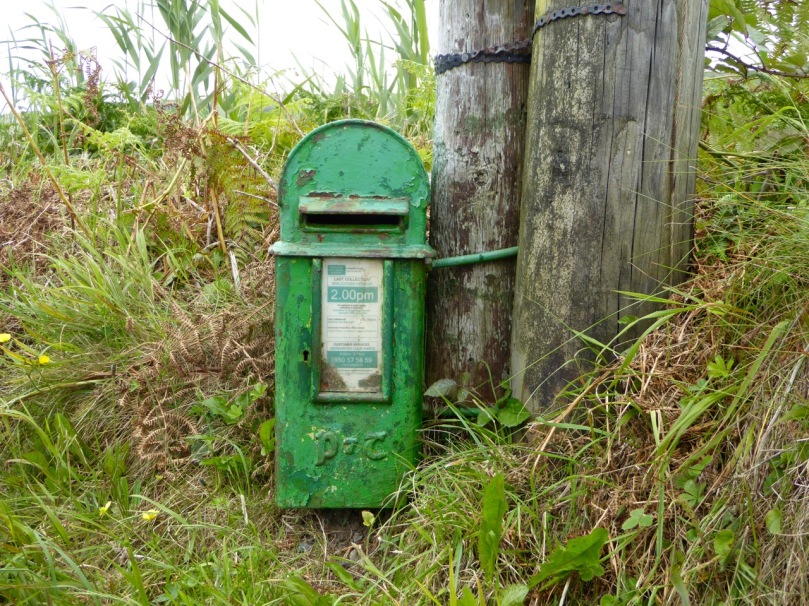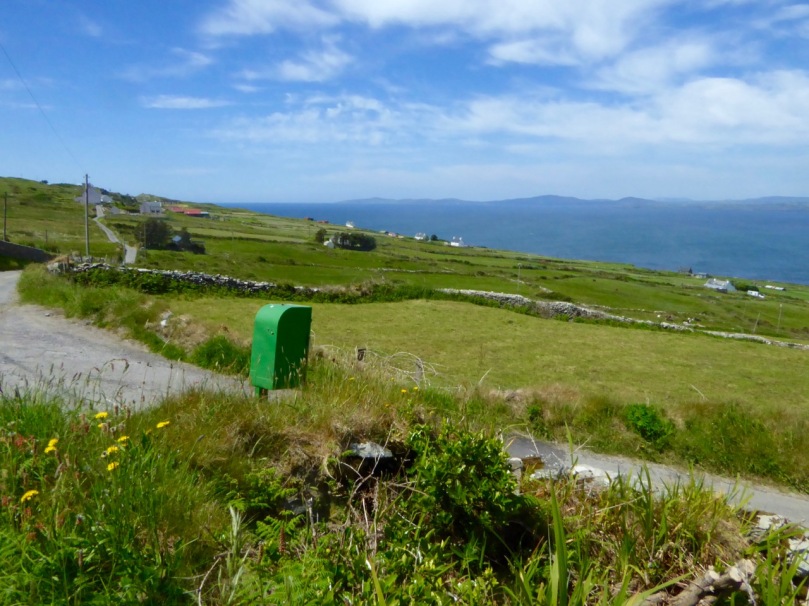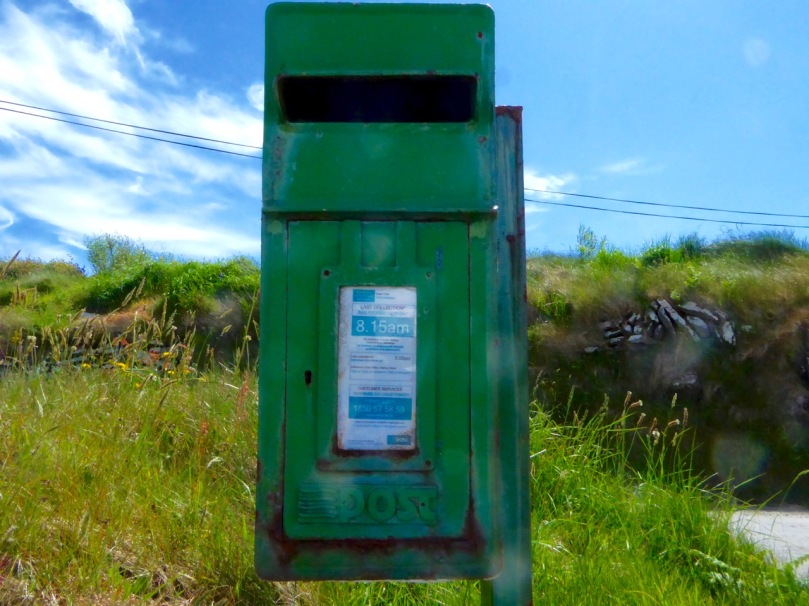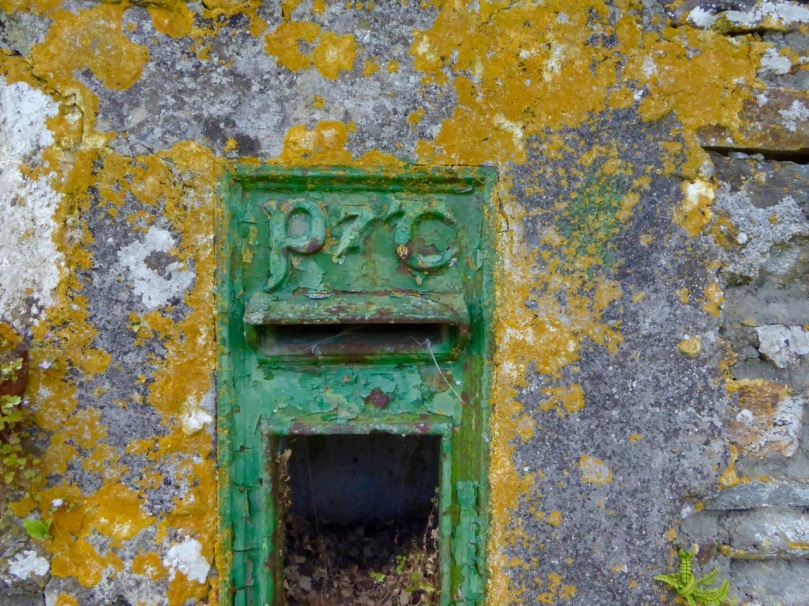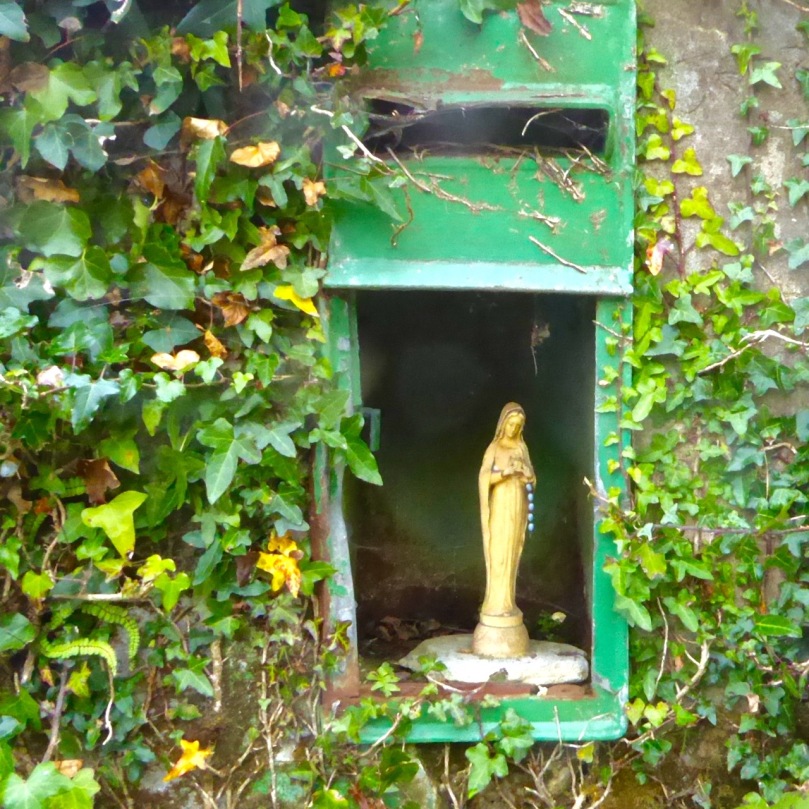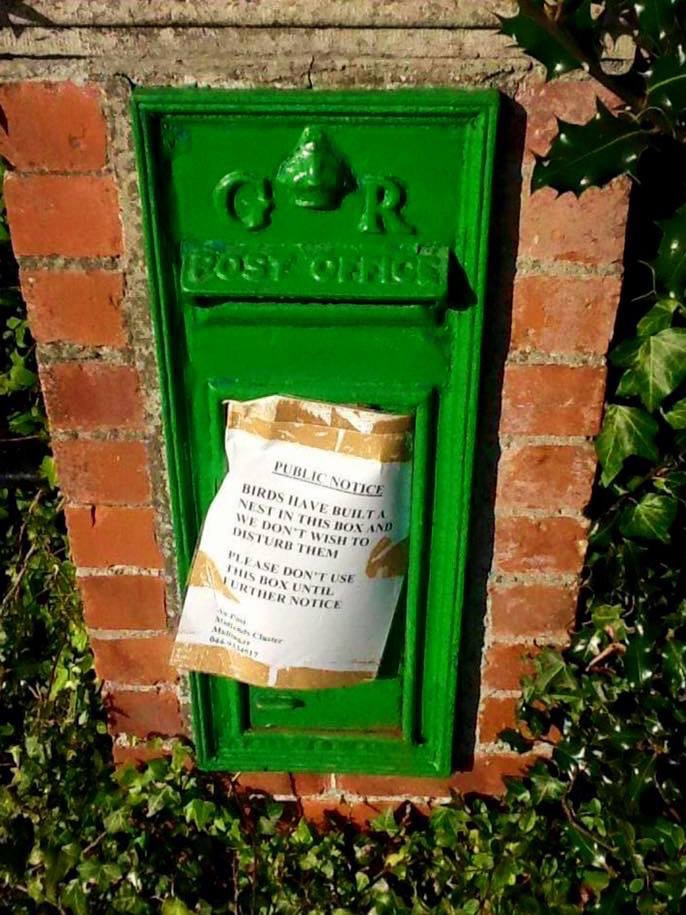-

 Beautiful depiction of Galway City. These beautiful quaint scenes from six individual towns were originally table and have been superbly mounted and framed to create a memorable souvenir collection.Originally painted by talented local artist Roisin O Shea,the prints depict everyday scenes of streetlife in Killarney,Kilkenny,Blarney,Galway,Kinsale and Youghal. Lahinch Co Clare 33cm x 39cm
Beautiful depiction of Galway City. These beautiful quaint scenes from six individual towns were originally table and have been superbly mounted and framed to create a memorable souvenir collection.Originally painted by talented local artist Roisin O Shea,the prints depict everyday scenes of streetlife in Killarney,Kilkenny,Blarney,Galway,Kinsale and Youghal. Lahinch Co Clare 33cm x 39cm -

 Beautiful depiction of Kilkenny City. These beautiful quaint scenes from six individual towns were originally table and have been superbly mounted and framed to create a memorable souvenir collection.Originally painted by talented local artist Roisin O Shea,the prints depict everyday scenes of streetlife in Killarney,Kilkenny,Blarney,Galway,Kinsale and Youghal. Lahinch Co Clare 33cm x 39cm
Beautiful depiction of Kilkenny City. These beautiful quaint scenes from six individual towns were originally table and have been superbly mounted and framed to create a memorable souvenir collection.Originally painted by talented local artist Roisin O Shea,the prints depict everyday scenes of streetlife in Killarney,Kilkenny,Blarney,Galway,Kinsale and Youghal. Lahinch Co Clare 33cm x 39cm -

 Beautiful depiction of Killarney Co Kerry. These beautiful quaint scenes from six individual towns were originally table and have been superbly mounted and framed to create a memorable souvenir collection.Originally painted by talented local artist Roisin O Shea,the prints depict everyday scenes of streetlife in Killarney,Kilkenny,Blarney,Galway,Kinsale and Youghal. Lahinch Co Clare 33cm x 39cm
Beautiful depiction of Killarney Co Kerry. These beautiful quaint scenes from six individual towns were originally table and have been superbly mounted and framed to create a memorable souvenir collection.Originally painted by talented local artist Roisin O Shea,the prints depict everyday scenes of streetlife in Killarney,Kilkenny,Blarney,Galway,Kinsale and Youghal. Lahinch Co Clare 33cm x 39cm -

 Beautiful depiction of Kinsale Co Cork These beautiful quaint scenes from six individual towns were originally table and have been superbly mounted and framed to create a memorable souvenir collection.Originally painted by talented local artist Roisin O Shea,the prints depict everyday scenes of streetlife in Killarney,Kilkenny,Blarney,Galway,Kinsale and Youghal. Lahinch Co Clare 33cm x 39cm
Beautiful depiction of Kinsale Co Cork These beautiful quaint scenes from six individual towns were originally table and have been superbly mounted and framed to create a memorable souvenir collection.Originally painted by talented local artist Roisin O Shea,the prints depict everyday scenes of streetlife in Killarney,Kilkenny,Blarney,Galway,Kinsale and Youghal. Lahinch Co Clare 33cm x 39cm -

 Beautiful depiction of Youghal Co Cork. These beautiful quaint scenes from six individual towns were originally table and have been superbly mounted and framed to create a memorable souvenir collection.Originally painted by talented local artist Roisin O Shea,the prints depict everyday scenes of streetlife in Killarney,Kilkenny,Blarney,Galway,Kinsale and Youghal. Lahinch Co Clare 33cm x 39cm
Beautiful depiction of Youghal Co Cork. These beautiful quaint scenes from six individual towns were originally table and have been superbly mounted and framed to create a memorable souvenir collection.Originally painted by talented local artist Roisin O Shea,the prints depict everyday scenes of streetlife in Killarney,Kilkenny,Blarney,Galway,Kinsale and Youghal. Lahinch Co Clare 33cm x 39cm -

 Beautiful depiction of Youghal Co Cork. These beautiful quaint scenes from six individual towns were originally table and have been superbly mounted and framed to create a memorable souvenir collection.Originally painted by talented local artist Roisin O Shea,the prints depict everyday scenes of streetlife in Killarney,Kilkenny,Blarney,Galway,Kinsale and Youghal. Lahinch Co Clare 33cm x 39cm
Beautiful depiction of Youghal Co Cork. These beautiful quaint scenes from six individual towns were originally table and have been superbly mounted and framed to create a memorable souvenir collection.Originally painted by talented local artist Roisin O Shea,the prints depict everyday scenes of streetlife in Killarney,Kilkenny,Blarney,Galway,Kinsale and Youghal. Lahinch Co Clare 33cm x 39cm -

 Brilliantly conceived Murphys Stout advertisement depicting a WW2 American GI with the ubiquitous Zippo cigarette lighter. Cobh Co Cork 68cm x 48cm
Brilliantly conceived Murphys Stout advertisement depicting a WW2 American GI with the ubiquitous Zippo cigarette lighter. Cobh Co Cork 68cm x 48cmJAMES J. MURPHY
 Born on November 1825, James Jeremiah Murphy was the eldest son of fifteen children born to Jeremiah James Murphy and Catherine Bullen. James J. served his time in the family business interest and was also involved in the running of a local distillery in Cork. He sold his share in this distillery to fund his share of the set up costs of the brewery in 1856. James J. was the senior partner along with his four other brothers. It was James who guided to the brewery to success in its first forty years and he saw its output grow to 100,000 barrels before his death in 1897. James J. through his life had a keen interest in sport, rowing, sailing and GAA being foremost. He was a supporter of the Cork Harbour Rowing Club and the Royal Cork Yacht Club and the Cork County Board of the GAA. James J. philanthropic efforts were also well known in the city supporting hospitals, orphanages and general relief of distress in the city so much so on his death being described as a ‘prince in the charitable world’. It is James J. that epitomises the Murphy’s brand in stature and quality of character.1854
Born on November 1825, James Jeremiah Murphy was the eldest son of fifteen children born to Jeremiah James Murphy and Catherine Bullen. James J. served his time in the family business interest and was also involved in the running of a local distillery in Cork. He sold his share in this distillery to fund his share of the set up costs of the brewery in 1856. James J. was the senior partner along with his four other brothers. It was James who guided to the brewery to success in its first forty years and he saw its output grow to 100,000 barrels before his death in 1897. James J. through his life had a keen interest in sport, rowing, sailing and GAA being foremost. He was a supporter of the Cork Harbour Rowing Club and the Royal Cork Yacht Club and the Cork County Board of the GAA. James J. philanthropic efforts were also well known in the city supporting hospitals, orphanages and general relief of distress in the city so much so on his death being described as a ‘prince in the charitable world’. It is James J. that epitomises the Murphy’s brand in stature and quality of character.1854OUR LADY’S WELL BREWERY
 In 1854 James J. and his brothers purchased the buildings of the Cork foundling Hospital and on this site built the brewery. The brewery eventually became known as the Lady’s Well Brewery as it is situated adjacent to a famous ‘Holy Well’ and water source that had become a famous place of devotion during penal times.1856
In 1854 James J. and his brothers purchased the buildings of the Cork foundling Hospital and on this site built the brewery. The brewery eventually became known as the Lady’s Well Brewery as it is situated adjacent to a famous ‘Holy Well’ and water source that had become a famous place of devotion during penal times.1856THE BEGINNING
 James J. Murphy and his brothers found James J. Murphy & Co. and begin brewing.1861
James J. Murphy and his brothers found James J. Murphy & Co. and begin brewing.1861FROM STRENGTH TO STRENGTH
 In 1861 the brewery produced 42,990 barrels and began to impose itself as one of the major breweries in the country.1885
In 1861 the brewery produced 42,990 barrels and began to impose itself as one of the major breweries in the country.1885A FRIEND OF THE POOR, HURRAH
 James J. was a much loved figure in Cork, a noted philanthropist and indeed hero of the entire city at one point. The ‘Hurrah for the hero’ song refers to James J’s heroic efforts to save the local economy from ruin in the year of 1885. The story behind this is that when the key bank for the region the ‘Munster Bank’ was close to ruin, which could have led to an economic disaster for the entire country and bankruptcy for thousands, James J. stepped in and led the venture to establish a new bank the ‘Munster and Leinster’, saving the Munster Bank depositors and creditors from financial loss and in some cases, ruin. His exploits in saving the bank, led to the writing of many a poem and song in his honour including ‘Hurrah for the man who’s a friend of the poor’, which would have been sung in pubs for many years afterwards.1889
James J. was a much loved figure in Cork, a noted philanthropist and indeed hero of the entire city at one point. The ‘Hurrah for the hero’ song refers to James J’s heroic efforts to save the local economy from ruin in the year of 1885. The story behind this is that when the key bank for the region the ‘Munster Bank’ was close to ruin, which could have led to an economic disaster for the entire country and bankruptcy for thousands, James J. stepped in and led the venture to establish a new bank the ‘Munster and Leinster’, saving the Munster Bank depositors and creditors from financial loss and in some cases, ruin. His exploits in saving the bank, led to the writing of many a poem and song in his honour including ‘Hurrah for the man who’s a friend of the poor’, which would have been sung in pubs for many years afterwards.1889THE MALT HOUSE
 In 1889 a Malt House for the brewery was built at a cost of 4,640 pounds and was ‘built and arranged on the newest principle and fitted throughout with the latest appliances known to modern science”. Today the Malthouse is one of the most famous Cork landmarks and continues to function as offices for Murphy’s.1892
In 1889 a Malt House for the brewery was built at a cost of 4,640 pounds and was ‘built and arranged on the newest principle and fitted throughout with the latest appliances known to modern science”. Today the Malthouse is one of the most famous Cork landmarks and continues to function as offices for Murphy’s.1892MURPHY’S GOLD
 Murphy’s Stout wins the Gold medal at the Brewers and Allied Trades Exhibition in Dublin and again wins the supreme award when the exhibition is held in Manchester in 1895. These same medals feature on our Murphy’s packaging today. Murphy’s have continued it’s tradition of excellence in brewing winning Gold again at the Brewing Industry International awards in 2002 and also gaining medals in the subsequent two competitions.1893
Murphy’s Stout wins the Gold medal at the Brewers and Allied Trades Exhibition in Dublin and again wins the supreme award when the exhibition is held in Manchester in 1895. These same medals feature on our Murphy’s packaging today. Murphy’s have continued it’s tradition of excellence in brewing winning Gold again at the Brewing Industry International awards in 2002 and also gaining medals in the subsequent two competitions.1893MURPHY’S FOR STRENGTH
 Eugen Sandow the world famous ‘strongman’, endorses Murphy’s Stout: “From experience I can strongly recommend Messrs JJ Murphy’s Stout”. The famous Murphy’s image of Sandow lifting a horse was then created.1906
Eugen Sandow the world famous ‘strongman’, endorses Murphy’s Stout: “From experience I can strongly recommend Messrs JJ Murphy’s Stout”. The famous Murphy’s image of Sandow lifting a horse was then created.1906THE JUBILEE
 The Brewery celebrates its 50th anniversary. On Whit Monday the brewery workforce and their families are treated to an excursion by train to Killarney. Paddy Barrett the youngest of the workforce that day at 13 went on to become head porter for the brewery and could recall the day vividly 50 years later.1913
The Brewery celebrates its 50th anniversary. On Whit Monday the brewery workforce and their families are treated to an excursion by train to Killarney. Paddy Barrett the youngest of the workforce that day at 13 went on to become head porter for the brewery and could recall the day vividly 50 years later.1913SWIMMING IN STOUT
 In the year of 1913 the No.5 Vat at ‘Lady’s Well’ Brewery burst and sent 23,000 galleons of porter flooding through the brewey and out on to Leitrim Street. The Cork Constitution, the local newspaper of the time wrote that “a worker had a most exciting experience and in the onrush of porter he had to swim in it for about 40 yards to save himself from asphyxiation”1914
In the year of 1913 the No.5 Vat at ‘Lady’s Well’ Brewery burst and sent 23,000 galleons of porter flooding through the brewey and out on to Leitrim Street. The Cork Constitution, the local newspaper of the time wrote that “a worker had a most exciting experience and in the onrush of porter he had to swim in it for about 40 yards to save himself from asphyxiation”1914JOINING UP
 The First World War marked an era of dramatic change both in the countries fortune and on a much smaller scale that of the Brewery’s. On the 13 August James J. Murphy and Co. joined the other members of the Cork Employers Federation in promising that ‘all constant employees volunteering to join any of his Majesties forces for active service in compliance with the call for help by the Government will be facilitated and their places given back to them at the end of the war’. Eighteen of the Brewery’s workers joined up including one sixteen year old. Ten never returned.1915
The First World War marked an era of dramatic change both in the countries fortune and on a much smaller scale that of the Brewery’s. On the 13 August James J. Murphy and Co. joined the other members of the Cork Employers Federation in promising that ‘all constant employees volunteering to join any of his Majesties forces for active service in compliance with the call for help by the Government will be facilitated and their places given back to them at the end of the war’. Eighteen of the Brewery’s workers joined up including one sixteen year old. Ten never returned.1915THE FIRST LORRY IN IRELAND
 James J. Murphy & Co. purchase the first petrol lorry in the country.1920
James J. Murphy & Co. purchase the first petrol lorry in the country.1920THE BURNING OF CORK
 On the 11-12th December the centre of Cork city was extensively damaged by fire including four of the company’s tied houses (Brewery owned establishments). The company was eventually compensated for its losses by the British government.1921
On the 11-12th December the centre of Cork city was extensively damaged by fire including four of the company’s tied houses (Brewery owned establishments). The company was eventually compensated for its losses by the British government.1921MURPHY’S IN A BOTTLE
 In 1921 James J. Murphy and Co. open a bottling plant and bottle their own stout. A foreman and four ‘boys’ were installed to run the operation and the product quickly won ‘good trade’.1924
In 1921 James J. Murphy and Co. open a bottling plant and bottle their own stout. A foreman and four ‘boys’ were installed to run the operation and the product quickly won ‘good trade’.1924THE FIRST CAMPAIGNS
 In 1924 the Murphy’s Brewery began to embrace advertising. In the decades prior to this the attitude had been somewhat negative with one director stating ‘We do not hope to thrive on pushing and puffing; our sole grounds for seeking popular favour is the excellence of our product’.1940
In 1924 the Murphy’s Brewery began to embrace advertising. In the decades prior to this the attitude had been somewhat negative with one director stating ‘We do not hope to thrive on pushing and puffing; our sole grounds for seeking popular favour is the excellence of our product’.1940WWII
 In 1940 at the height of the London Blitz the Murphy’s auditing firm is completely destroyed. The war which had indirectly affected the firm in terms of shortages of fuel and materials now affected the brewery directly.1953
In 1940 at the height of the London Blitz the Murphy’s auditing firm is completely destroyed. The war which had indirectly affected the firm in terms of shortages of fuel and materials now affected the brewery directly.1953LT. COL JOHN FITZJAMES
 In 1953 the last direct descendant of James J. takes over Chairmanship of the firm. Affectionately known in the Brewery as the ‘Colonel’ he ran the company until 1981.1961
In 1953 the last direct descendant of James J. takes over Chairmanship of the firm. Affectionately known in the Brewery as the ‘Colonel’ he ran the company until 1981.1961THE IRON LUNG
 Complete replacement of old wooden barrels to aluminium lined vessels (kegs) known as ‘Iron lungs’ draws to an end the era of ‘Coopers’ the tradesmen who built the wooden barrels on site in the Brewery for so many decades.1979
Complete replacement of old wooden barrels to aluminium lined vessels (kegs) known as ‘Iron lungs’ draws to an end the era of ‘Coopers’ the tradesmen who built the wooden barrels on site in the Brewery for so many decades.1979MURPHY’S IN AMERICA

Murphy’s reaches Americans shores for the first time winning back many drinkers lost to emigration and a whole new generation of stout drinkers.
1985MURPHY’S GOES INTERNATIONAL
 Murphy’s Launched as a National and International Brand. Exports included UK, US and Canada. Introduction of the first 25cl long neck stout bottle.1994
Murphy’s Launched as a National and International Brand. Exports included UK, US and Canada. Introduction of the first 25cl long neck stout bottle.1994MURPHY’S OPEN
 Murphy’s commence sponsorship of the hugely successful Murphy’s Irish Open Golf Championship culminating in Colm Montgomery’s ‘Monty’s’ famous third win at ‘Fota Island’ in 2002.2005
Murphy’s commence sponsorship of the hugely successful Murphy’s Irish Open Golf Championship culminating in Colm Montgomery’s ‘Monty’s’ famous third win at ‘Fota Island’ in 2002.2005MURPHY’S GOLD
 Murphy’s wins Gold at the Brewing Industry International Awards a testament to it’s superior taste and quality. Indeed 2003 was the first of three successive wins in this competition.2006
Murphy’s wins Gold at the Brewing Industry International Awards a testament to it’s superior taste and quality. Indeed 2003 was the first of three successive wins in this competition.2006150 YEARS OF BREWING LEGEND
 The Murphy Brewery celebrates 150 years of brewing from 1856 to 2006 going from strength to strength; the now legendary stout is sold in over 40 countries and recognised worldwide as superior stout. We hope James J. would be proud.
The Murphy Brewery celebrates 150 years of brewing from 1856 to 2006 going from strength to strength; the now legendary stout is sold in over 40 countries and recognised worldwide as superior stout. We hope James J. would be proud. -

 Brilliantly conceived Murphys Stout advertisement depicting a Blues harmonica player Cobh Co Cork 68cm x 48cm
Brilliantly conceived Murphys Stout advertisement depicting a Blues harmonica player Cobh Co Cork 68cm x 48cmJAMES J. MURPHY
 Born on November 1825, James Jeremiah Murphy was the eldest son of fifteen children born to Jeremiah James Murphy and Catherine Bullen. James J. served his time in the family business interest and was also involved in the running of a local distillery in Cork. He sold his share in this distillery to fund his share of the set up costs of the brewery in 1856. James J. was the senior partner along with his four other brothers. It was James who guided to the brewery to success in its first forty years and he saw its output grow to 100,000 barrels before his death in 1897. James J. through his life had a keen interest in sport, rowing, sailing and GAA being foremost. He was a supporter of the Cork Harbour Rowing Club and the Royal Cork Yacht Club and the Cork County Board of the GAA. James J. philanthropic efforts were also well known in the city supporting hospitals, orphanages and general relief of distress in the city so much so on his death being described as a ‘prince in the charitable world’. It is James J. that epitomises the Murphy’s brand in stature and quality of character.1854
Born on November 1825, James Jeremiah Murphy was the eldest son of fifteen children born to Jeremiah James Murphy and Catherine Bullen. James J. served his time in the family business interest and was also involved in the running of a local distillery in Cork. He sold his share in this distillery to fund his share of the set up costs of the brewery in 1856. James J. was the senior partner along with his four other brothers. It was James who guided to the brewery to success in its first forty years and he saw its output grow to 100,000 barrels before his death in 1897. James J. through his life had a keen interest in sport, rowing, sailing and GAA being foremost. He was a supporter of the Cork Harbour Rowing Club and the Royal Cork Yacht Club and the Cork County Board of the GAA. James J. philanthropic efforts were also well known in the city supporting hospitals, orphanages and general relief of distress in the city so much so on his death being described as a ‘prince in the charitable world’. It is James J. that epitomises the Murphy’s brand in stature and quality of character.1854OUR LADY’S WELL BREWERY
 In 1854 James J. and his brothers purchased the buildings of the Cork foundling Hospital and on this site built the brewery. The brewery eventually became known as the Lady’s Well Brewery as it is situated adjacent to a famous ‘Holy Well’ and water source that had become a famous place of devotion during penal times.1856
In 1854 James J. and his brothers purchased the buildings of the Cork foundling Hospital and on this site built the brewery. The brewery eventually became known as the Lady’s Well Brewery as it is situated adjacent to a famous ‘Holy Well’ and water source that had become a famous place of devotion during penal times.1856THE BEGINNING
 James J. Murphy and his brothers found James J. Murphy & Co. and begin brewing.1861
James J. Murphy and his brothers found James J. Murphy & Co. and begin brewing.1861FROM STRENGTH TO STRENGTH
 In 1861 the brewery produced 42,990 barrels and began to impose itself as one of the major breweries in the country.1885
In 1861 the brewery produced 42,990 barrels and began to impose itself as one of the major breweries in the country.1885A FRIEND OF THE POOR, HURRAH
 James J. was a much loved figure in Cork, a noted philanthropist and indeed hero of the entire city at one point. The ‘Hurrah for the hero’ song refers to James J’s heroic efforts to save the local economy from ruin in the year of 1885. The story behind this is that when the key bank for the region the ‘Munster Bank’ was close to ruin, which could have led to an economic disaster for the entire country and bankruptcy for thousands, James J. stepped in and led the venture to establish a new bank the ‘Munster and Leinster’, saving the Munster Bank depositors and creditors from financial loss and in some cases, ruin. His exploits in saving the bank, led to the writing of many a poem and song in his honour including ‘Hurrah for the man who’s a friend of the poor’, which would have been sung in pubs for many years afterwards.1889
James J. was a much loved figure in Cork, a noted philanthropist and indeed hero of the entire city at one point. The ‘Hurrah for the hero’ song refers to James J’s heroic efforts to save the local economy from ruin in the year of 1885. The story behind this is that when the key bank for the region the ‘Munster Bank’ was close to ruin, which could have led to an economic disaster for the entire country and bankruptcy for thousands, James J. stepped in and led the venture to establish a new bank the ‘Munster and Leinster’, saving the Munster Bank depositors and creditors from financial loss and in some cases, ruin. His exploits in saving the bank, led to the writing of many a poem and song in his honour including ‘Hurrah for the man who’s a friend of the poor’, which would have been sung in pubs for many years afterwards.1889THE MALT HOUSE
 In 1889 a Malt House for the brewery was built at a cost of 4,640 pounds and was ‘built and arranged on the newest principle and fitted throughout with the latest appliances known to modern science”. Today the Malthouse is one of the most famous Cork landmarks and continues to function as offices for Murphy’s.1892
In 1889 a Malt House for the brewery was built at a cost of 4,640 pounds and was ‘built and arranged on the newest principle and fitted throughout with the latest appliances known to modern science”. Today the Malthouse is one of the most famous Cork landmarks and continues to function as offices for Murphy’s.1892MURPHY’S GOLD
 Murphy’s Stout wins the Gold medal at the Brewers and Allied Trades Exhibition in Dublin and again wins the supreme award when the exhibition is held in Manchester in 1895. These same medals feature on our Murphy’s packaging today. Murphy’s have continued it’s tradition of excellence in brewing winning Gold again at the Brewing Industry International awards in 2002 and also gaining medals in the subsequent two competitions.1893
Murphy’s Stout wins the Gold medal at the Brewers and Allied Trades Exhibition in Dublin and again wins the supreme award when the exhibition is held in Manchester in 1895. These same medals feature on our Murphy’s packaging today. Murphy’s have continued it’s tradition of excellence in brewing winning Gold again at the Brewing Industry International awards in 2002 and also gaining medals in the subsequent two competitions.1893MURPHY’S FOR STRENGTH
 Eugen Sandow the world famous ‘strongman’, endorses Murphy’s Stout: “From experience I can strongly recommend Messrs JJ Murphy’s Stout”. The famous Murphy’s image of Sandow lifting a horse was then created.1906
Eugen Sandow the world famous ‘strongman’, endorses Murphy’s Stout: “From experience I can strongly recommend Messrs JJ Murphy’s Stout”. The famous Murphy’s image of Sandow lifting a horse was then created.1906THE JUBILEE
 The Brewery celebrates its 50th anniversary. On Whit Monday the brewery workforce and their families are treated to an excursion by train to Killarney. Paddy Barrett the youngest of the workforce that day at 13 went on to become head porter for the brewery and could recall the day vividly 50 years later.1913
The Brewery celebrates its 50th anniversary. On Whit Monday the brewery workforce and their families are treated to an excursion by train to Killarney. Paddy Barrett the youngest of the workforce that day at 13 went on to become head porter for the brewery and could recall the day vividly 50 years later.1913SWIMMING IN STOUT
 In the year of 1913 the No.5 Vat at ‘Lady’s Well’ Brewery burst and sent 23,000 galleons of porter flooding through the brewey and out on to Leitrim Street. The Cork Constitution, the local newspaper of the time wrote that “a worker had a most exciting experience and in the onrush of porter he had to swim in it for about 40 yards to save himself from asphyxiation”1914
In the year of 1913 the No.5 Vat at ‘Lady’s Well’ Brewery burst and sent 23,000 galleons of porter flooding through the brewey and out on to Leitrim Street. The Cork Constitution, the local newspaper of the time wrote that “a worker had a most exciting experience and in the onrush of porter he had to swim in it for about 40 yards to save himself from asphyxiation”1914JOINING UP
 The First World War marked an era of dramatic change both in the countries fortune and on a much smaller scale that of the Brewery’s. On the 13 August James J. Murphy and Co. joined the other members of the Cork Employers Federation in promising that ‘all constant employees volunteering to join any of his Majesties forces for active service in compliance with the call for help by the Government will be facilitated and their places given back to them at the end of the war’. Eighteen of the Brewery’s workers joined up including one sixteen year old. Ten never returned.1915
The First World War marked an era of dramatic change both in the countries fortune and on a much smaller scale that of the Brewery’s. On the 13 August James J. Murphy and Co. joined the other members of the Cork Employers Federation in promising that ‘all constant employees volunteering to join any of his Majesties forces for active service in compliance with the call for help by the Government will be facilitated and their places given back to them at the end of the war’. Eighteen of the Brewery’s workers joined up including one sixteen year old. Ten never returned.1915THE FIRST LORRY IN IRELAND
 James J. Murphy & Co. purchase the first petrol lorry in the country.1920
James J. Murphy & Co. purchase the first petrol lorry in the country.1920THE BURNING OF CORK
 On the 11-12th December the centre of Cork city was extensively damaged by fire including four of the company’s tied houses (Brewery owned establishments). The company was eventually compensated for its losses by the British government.1921
On the 11-12th December the centre of Cork city was extensively damaged by fire including four of the company’s tied houses (Brewery owned establishments). The company was eventually compensated for its losses by the British government.1921MURPHY’S IN A BOTTLE
 In 1921 James J. Murphy and Co. open a bottling plant and bottle their own stout. A foreman and four ‘boys’ were installed to run the operation and the product quickly won ‘good trade’.1924
In 1921 James J. Murphy and Co. open a bottling plant and bottle their own stout. A foreman and four ‘boys’ were installed to run the operation and the product quickly won ‘good trade’.1924THE FIRST CAMPAIGNS
 In 1924 the Murphy’s Brewery began to embrace advertising. In the decades prior to this the attitude had been somewhat negative with one director stating ‘We do not hope to thrive on pushing and puffing; our sole grounds for seeking popular favour is the excellence of our product’.1940
In 1924 the Murphy’s Brewery began to embrace advertising. In the decades prior to this the attitude had been somewhat negative with one director stating ‘We do not hope to thrive on pushing and puffing; our sole grounds for seeking popular favour is the excellence of our product’.1940WWII
 In 1940 at the height of the London Blitz the Murphy’s auditing firm is completely destroyed. The war which had indirectly affected the firm in terms of shortages of fuel and materials now affected the brewery directly.1953
In 1940 at the height of the London Blitz the Murphy’s auditing firm is completely destroyed. The war which had indirectly affected the firm in terms of shortages of fuel and materials now affected the brewery directly.1953LT. COL JOHN FITZJAMES
 In 1953 the last direct descendant of James J. takes over Chairmanship of the firm. Affectionately known in the Brewery as the ‘Colonel’ he ran the company until 1981.1961
In 1953 the last direct descendant of James J. takes over Chairmanship of the firm. Affectionately known in the Brewery as the ‘Colonel’ he ran the company until 1981.1961THE IRON LUNG
 Complete replacement of old wooden barrels to aluminium lined vessels (kegs) known as ‘Iron lungs’ draws to an end the era of ‘Coopers’ the tradesmen who built the wooden barrels on site in the Brewery for so many decades.1979
Complete replacement of old wooden barrels to aluminium lined vessels (kegs) known as ‘Iron lungs’ draws to an end the era of ‘Coopers’ the tradesmen who built the wooden barrels on site in the Brewery for so many decades.1979MURPHY’S IN AMERICA

Murphy’s reaches Americans shores for the first time winning back many drinkers lost to emigration and a whole new generation of stout drinkers.
1985MURPHY’S GOES INTERNATIONAL
 Murphy’s Launched as a National and International Brand. Exports included UK, US and Canada. Introduction of the first 25cl long neck stout bottle.1994
Murphy’s Launched as a National and International Brand. Exports included UK, US and Canada. Introduction of the first 25cl long neck stout bottle.1994MURPHY’S OPEN
 Murphy’s commence sponsorship of the hugely successful Murphy’s Irish Open Golf Championship culminating in Colm Montgomery’s ‘Monty’s’ famous third win at ‘Fota Island’ in 2002.2005
Murphy’s commence sponsorship of the hugely successful Murphy’s Irish Open Golf Championship culminating in Colm Montgomery’s ‘Monty’s’ famous third win at ‘Fota Island’ in 2002.2005MURPHY’S GOLD
 Murphy’s wins Gold at the Brewing Industry International Awards a testament to it’s superior taste and quality. Indeed 2003 was the first of three successive wins in this competition.2006
Murphy’s wins Gold at the Brewing Industry International Awards a testament to it’s superior taste and quality. Indeed 2003 was the first of three successive wins in this competition.2006150 YEARS OF BREWING LEGEND
 The Murphy Brewery celebrates 150 years of brewing from 1856 to 2006 going from strength to strength; the now legendary stout is sold in over 40 countries and recognised worldwide as superior stout. We hope James J. would be proud.
The Murphy Brewery celebrates 150 years of brewing from 1856 to 2006 going from strength to strength; the now legendary stout is sold in over 40 countries and recognised worldwide as superior stout. We hope James J. would be proud. -

 Brilliantly conceived Murphys Stout advertisement depicting a Blues harmonica player(unframed poster only) Cobh Co Cork 60cm x 45cm
Brilliantly conceived Murphys Stout advertisement depicting a Blues harmonica player(unframed poster only) Cobh Co Cork 60cm x 45cmJAMES J. MURPHY
 Born on November 1825, James Jeremiah Murphy was the eldest son of fifteen children born to Jeremiah James Murphy and Catherine Bullen. James J. served his time in the family business interest and was also involved in the running of a local distillery in Cork. He sold his share in this distillery to fund his share of the set up costs of the brewery in 1856. James J. was the senior partner along with his four other brothers. It was James who guided to the brewery to success in its first forty years and he saw its output grow to 100,000 barrels before his death in 1897. James J. through his life had a keen interest in sport, rowing, sailing and GAA being foremost. He was a supporter of the Cork Harbour Rowing Club and the Royal Cork Yacht Club and the Cork County Board of the GAA. James J. philanthropic efforts were also well known in the city supporting hospitals, orphanages and general relief of distress in the city so much so on his death being described as a ‘prince in the charitable world’. It is James J. that epitomises the Murphy’s brand in stature and quality of character.1854
Born on November 1825, James Jeremiah Murphy was the eldest son of fifteen children born to Jeremiah James Murphy and Catherine Bullen. James J. served his time in the family business interest and was also involved in the running of a local distillery in Cork. He sold his share in this distillery to fund his share of the set up costs of the brewery in 1856. James J. was the senior partner along with his four other brothers. It was James who guided to the brewery to success in its first forty years and he saw its output grow to 100,000 barrels before his death in 1897. James J. through his life had a keen interest in sport, rowing, sailing and GAA being foremost. He was a supporter of the Cork Harbour Rowing Club and the Royal Cork Yacht Club and the Cork County Board of the GAA. James J. philanthropic efforts were also well known in the city supporting hospitals, orphanages and general relief of distress in the city so much so on his death being described as a ‘prince in the charitable world’. It is James J. that epitomises the Murphy’s brand in stature and quality of character.1854OUR LADY’S WELL BREWERY
 In 1854 James J. and his brothers purchased the buildings of the Cork foundling Hospital and on this site built the brewery. The brewery eventually became known as the Lady’s Well Brewery as it is situated adjacent to a famous ‘Holy Well’ and water source that had become a famous place of devotion during penal times.1856
In 1854 James J. and his brothers purchased the buildings of the Cork foundling Hospital and on this site built the brewery. The brewery eventually became known as the Lady’s Well Brewery as it is situated adjacent to a famous ‘Holy Well’ and water source that had become a famous place of devotion during penal times.1856THE BEGINNING
 James J. Murphy and his brothers found James J. Murphy & Co. and begin brewing.1861
James J. Murphy and his brothers found James J. Murphy & Co. and begin brewing.1861FROM STRENGTH TO STRENGTH
 In 1861 the brewery produced 42,990 barrels and began to impose itself as one of the major breweries in the country.1885
In 1861 the brewery produced 42,990 barrels and began to impose itself as one of the major breweries in the country.1885A FRIEND OF THE POOR, HURRAH
 James J. was a much loved figure in Cork, a noted philanthropist and indeed hero of the entire city at one point. The ‘Hurrah for the hero’ song refers to James J’s heroic efforts to save the local economy from ruin in the year of 1885. The story behind this is that when the key bank for the region the ‘Munster Bank’ was close to ruin, which could have led to an economic disaster for the entire country and bankruptcy for thousands, James J. stepped in and led the venture to establish a new bank the ‘Munster and Leinster’, saving the Munster Bank depositors and creditors from financial loss and in some cases, ruin. His exploits in saving the bank, led to the writing of many a poem and song in his honour including ‘Hurrah for the man who’s a friend of the poor’, which would have been sung in pubs for many years afterwards.1889
James J. was a much loved figure in Cork, a noted philanthropist and indeed hero of the entire city at one point. The ‘Hurrah for the hero’ song refers to James J’s heroic efforts to save the local economy from ruin in the year of 1885. The story behind this is that when the key bank for the region the ‘Munster Bank’ was close to ruin, which could have led to an economic disaster for the entire country and bankruptcy for thousands, James J. stepped in and led the venture to establish a new bank the ‘Munster and Leinster’, saving the Munster Bank depositors and creditors from financial loss and in some cases, ruin. His exploits in saving the bank, led to the writing of many a poem and song in his honour including ‘Hurrah for the man who’s a friend of the poor’, which would have been sung in pubs for many years afterwards.1889THE MALT HOUSE
 In 1889 a Malt House for the brewery was built at a cost of 4,640 pounds and was ‘built and arranged on the newest principle and fitted throughout with the latest appliances known to modern science”. Today the Malthouse is one of the most famous Cork landmarks and continues to function as offices for Murphy’s.1892
In 1889 a Malt House for the brewery was built at a cost of 4,640 pounds and was ‘built and arranged on the newest principle and fitted throughout with the latest appliances known to modern science”. Today the Malthouse is one of the most famous Cork landmarks and continues to function as offices for Murphy’s.1892MURPHY’S GOLD
 Murphy’s Stout wins the Gold medal at the Brewers and Allied Trades Exhibition in Dublin and again wins the supreme award when the exhibition is held in Manchester in 1895. These same medals feature on our Murphy’s packaging today. Murphy’s have continued it’s tradition of excellence in brewing winning Gold again at the Brewing Industry International awards in 2002 and also gaining medals in the subsequent two competitions.1893
Murphy’s Stout wins the Gold medal at the Brewers and Allied Trades Exhibition in Dublin and again wins the supreme award when the exhibition is held in Manchester in 1895. These same medals feature on our Murphy’s packaging today. Murphy’s have continued it’s tradition of excellence in brewing winning Gold again at the Brewing Industry International awards in 2002 and also gaining medals in the subsequent two competitions.1893MURPHY’S FOR STRENGTH
 Eugen Sandow the world famous ‘strongman’, endorses Murphy’s Stout: “From experience I can strongly recommend Messrs JJ Murphy’s Stout”. The famous Murphy’s image of Sandow lifting a horse was then created.1906
Eugen Sandow the world famous ‘strongman’, endorses Murphy’s Stout: “From experience I can strongly recommend Messrs JJ Murphy’s Stout”. The famous Murphy’s image of Sandow lifting a horse was then created.1906THE JUBILEE
 The Brewery celebrates its 50th anniversary. On Whit Monday the brewery workforce and their families are treated to an excursion by train to Killarney. Paddy Barrett the youngest of the workforce that day at 13 went on to become head porter for the brewery and could recall the day vividly 50 years later.1913
The Brewery celebrates its 50th anniversary. On Whit Monday the brewery workforce and their families are treated to an excursion by train to Killarney. Paddy Barrett the youngest of the workforce that day at 13 went on to become head porter for the brewery and could recall the day vividly 50 years later.1913SWIMMING IN STOUT
 In the year of 1913 the No.5 Vat at ‘Lady’s Well’ Brewery burst and sent 23,000 galleons of porter flooding through the brewey and out on to Leitrim Street. The Cork Constitution, the local newspaper of the time wrote that “a worker had a most exciting experience and in the onrush of porter he had to swim in it for about 40 yards to save himself from asphyxiation”1914
In the year of 1913 the No.5 Vat at ‘Lady’s Well’ Brewery burst and sent 23,000 galleons of porter flooding through the brewey and out on to Leitrim Street. The Cork Constitution, the local newspaper of the time wrote that “a worker had a most exciting experience and in the onrush of porter he had to swim in it for about 40 yards to save himself from asphyxiation”1914JOINING UP
 The First World War marked an era of dramatic change both in the countries fortune and on a much smaller scale that of the Brewery’s. On the 13 August James J. Murphy and Co. joined the other members of the Cork Employers Federation in promising that ‘all constant employees volunteering to join any of his Majesties forces for active service in compliance with the call for help by the Government will be facilitated and their places given back to them at the end of the war’. Eighteen of the Brewery’s workers joined up including one sixteen year old. Ten never returned.1915
The First World War marked an era of dramatic change both in the countries fortune and on a much smaller scale that of the Brewery’s. On the 13 August James J. Murphy and Co. joined the other members of the Cork Employers Federation in promising that ‘all constant employees volunteering to join any of his Majesties forces for active service in compliance with the call for help by the Government will be facilitated and their places given back to them at the end of the war’. Eighteen of the Brewery’s workers joined up including one sixteen year old. Ten never returned.1915THE FIRST LORRY IN IRELAND
 James J. Murphy & Co. purchase the first petrol lorry in the country.1920
James J. Murphy & Co. purchase the first petrol lorry in the country.1920THE BURNING OF CORK
 On the 11-12th December the centre of Cork city was extensively damaged by fire including four of the company’s tied houses (Brewery owned establishments). The company was eventually compensated for its losses by the British government.1921
On the 11-12th December the centre of Cork city was extensively damaged by fire including four of the company’s tied houses (Brewery owned establishments). The company was eventually compensated for its losses by the British government.1921MURPHY’S IN A BOTTLE
 In 1921 James J. Murphy and Co. open a bottling plant and bottle their own stout. A foreman and four ‘boys’ were installed to run the operation and the product quickly won ‘good trade’.1924
In 1921 James J. Murphy and Co. open a bottling plant and bottle their own stout. A foreman and four ‘boys’ were installed to run the operation and the product quickly won ‘good trade’.1924THE FIRST CAMPAIGNS
 In 1924 the Murphy’s Brewery began to embrace advertising. In the decades prior to this the attitude had been somewhat negative with one director stating ‘We do not hope to thrive on pushing and puffing; our sole grounds for seeking popular favour is the excellence of our product’.1940
In 1924 the Murphy’s Brewery began to embrace advertising. In the decades prior to this the attitude had been somewhat negative with one director stating ‘We do not hope to thrive on pushing and puffing; our sole grounds for seeking popular favour is the excellence of our product’.1940WWII
 In 1940 at the height of the London Blitz the Murphy’s auditing firm is completely destroyed. The war which had indirectly affected the firm in terms of shortages of fuel and materials now affected the brewery directly.1953
In 1940 at the height of the London Blitz the Murphy’s auditing firm is completely destroyed. The war which had indirectly affected the firm in terms of shortages of fuel and materials now affected the brewery directly.1953LT. COL JOHN FITZJAMES
 In 1953 the last direct descendant of James J. takes over Chairmanship of the firm. Affectionately known in the Brewery as the ‘Colonel’ he ran the company until 1981.1961
In 1953 the last direct descendant of James J. takes over Chairmanship of the firm. Affectionately known in the Brewery as the ‘Colonel’ he ran the company until 1981.1961THE IRON LUNG
 Complete replacement of old wooden barrels to aluminium lined vessels (kegs) known as ‘Iron lungs’ draws to an end the era of ‘Coopers’ the tradesmen who built the wooden barrels on site in the Brewery for so many decades.1979
Complete replacement of old wooden barrels to aluminium lined vessels (kegs) known as ‘Iron lungs’ draws to an end the era of ‘Coopers’ the tradesmen who built the wooden barrels on site in the Brewery for so many decades.1979MURPHY’S IN AMERICA

Murphy’s reaches Americans shores for the first time winning back many drinkers lost to emigration and a whole new generation of stout drinkers.
1985MURPHY’S GOES INTERNATIONAL
 Murphy’s Launched as a National and International Brand. Exports included UK, US and Canada. Introduction of the first 25cl long neck stout bottle.1994
Murphy’s Launched as a National and International Brand. Exports included UK, US and Canada. Introduction of the first 25cl long neck stout bottle.1994MURPHY’S OPEN
 Murphy’s commence sponsorship of the hugely successful Murphy’s Irish Open Golf Championship culminating in Colm Montgomery’s ‘Monty’s’ famous third win at ‘Fota Island’ in 2002.2005
Murphy’s commence sponsorship of the hugely successful Murphy’s Irish Open Golf Championship culminating in Colm Montgomery’s ‘Monty’s’ famous third win at ‘Fota Island’ in 2002.2005MURPHY’S GOLD
 Murphy’s wins Gold at the Brewing Industry International Awards a testament to it’s superior taste and quality. Indeed 2003 was the first of three successive wins in this competition.2006
Murphy’s wins Gold at the Brewing Industry International Awards a testament to it’s superior taste and quality. Indeed 2003 was the first of three successive wins in this competition.2006150 YEARS OF BREWING LEGEND
 The Murphy Brewery celebrates 150 years of brewing from 1856 to 2006 going from strength to strength; the now legendary stout is sold in over 40 countries and recognised worldwide as superior stout. We hope James J. would be proud.
The Murphy Brewery celebrates 150 years of brewing from 1856 to 2006 going from strength to strength; the now legendary stout is sold in over 40 countries and recognised worldwide as superior stout. We hope James J. would be proud. -


The first act of the Irish Free State after independence was to paint all the post boxes throughout the country green. It was a brilliant stroke – royal red replaced by emerald green in one of the most visible and ubiquitous symbols of national administration.
The Penfold post box in Skibbereen, one of only a handful left in Ireland
Ironically, the post boxes themselves did not change, so the royal insignias were simply over-painted by the new colour. The result was a charming mixture of tradition and adaptation that serves as an ongoing reminder of the history of Ireland and its institutions.

Special stamps issued by the Royal Mail in 2015 to celebrate the bicentenary of the birth of Anthony Trollope
The first post boxes were introduced to Ireland in the 1850s by the novelist Anthony Trollope, then a Surveyor for the Post Office. Trollope was happy in Ireland and wrote several novels and stories set here, although they are not the works for which he is most remembered.
We don’t usually think of Anthony Trollope as an Irish novelist but he lived here for almost 20 years, spent working for the Post Office and writing
One of the earliest models for a free-standing post box came to be known as the Penfold, after its designer, J W Penfold. They were manufactured and deployed from 1866 to 1879 and very few have survived in Ireland to this day – only six are known and of these only three are still in operation. Skibbereen has one of those, and very fine it is: one hundred and fifty years old and still in daily use!
The hexagonal Penfold designed was apparently inspired by the Temple of the Winds in Athens (although the Temple is octagonal), with the addition of an acanthus leaf on the cap and a smart bud-shaped finial and beading.

Photograph of the Temple of the Winds from Wikipedia
Our Skibbereen Penfold is in excellent condition: note the royal insignia and the entwined VR for Victoria Regina.
The Penfolds were replaced by round pillar boxes because there were too many complaints that the hexagonal design caused letters to stick. These cylindrical boxes can be seen everywhere in Ireland still, although mostly in towns and cities. The one below is on Grand Parade in Cork.
In his book The Irish Post Box, which I gratefully acknowledge as the source of much of the information in this blog post, Stephen Ferguson describes the three main types of post boxes that have been developed for use in Ireland: pillar, wall and lamp. In rural areas, such as West Cork, wall and lamp boxes are the most common forms I have encountered.
Here’s a representative wall box in Skibbereen. Interestingly, it’s part of a mini-complex of historical markers including the plaque to the Clerke sisters (see my posts From Skibbereen to the Moon Part 1 and Part 2 for more about these remarkable women and their family) and signs for the Skibbereen heritage walking trail, all mounted together on the wall of what was the main bank in Skibbereen during the Famine period.
The box was manufactured by W T Allen and Co of London and bears the ornately scrolled insignia and crown of Edward the VII, which places it between 1901 to 1910.
Here’s another nice one in Bantry, a Victorian one, although this time the VR lettering is simpler than on the Penfold. This one has been painted so often that the embossed POST OFFICE on the protective hood has almost disappeared under the layers.
Lamp boxes were designed for remote areas where a suitable wall might not be readily available. Ferguson explains:
Lamp post boxes, based on a design used by the United States Postal Service, were first introduced in 1896 in London as a response to calls for more post boxes throughout the city. Affixed to a street lamp, the boxes were used at locations where the expense of a pillar or wall box could not be justified. In Ireland, however, they were often deployed in rural areas where, attached to a telegraph or specially erected pole by metal clips, they were very useful in extending postal collections to remote and sparsely populated regions. Tucked under hedges or used sometimes as a smaller version of a wall box, these post boxes were relatively cheap to make and easy to install and they symbolise…the extraordinary influence and reach of the Post Office as an institution at the height of its powers.
Driving or walking around rural Ireland, look out for ‘lamp’ boxes. Here’s one from the road near Barley Cove.
 A closer inspection reveals this one bears the P & T logo that was in use between 1939 and 1984, before it was replaced by the brand ‘An Post’. Sometimes the old royal initials were ground off the boxes, or sometimes the doors were replaced with new ones bearing the P&T lettering, but it seems that considerations of cost (always paramount with the careful Post Office) allowed many to simply remain in place as they were. In the early years of the new state, some were embossed with the Saorstát Éireann logo (even sharing the door with a VR insignia) but that practice was relatively short lived and I have found no examples to it yet in West Cork. The website Irish Postal History has this example from Washington Street in Cork.
A closer inspection reveals this one bears the P & T logo that was in use between 1939 and 1984, before it was replaced by the brand ‘An Post’. Sometimes the old royal initials were ground off the boxes, or sometimes the doors were replaced with new ones bearing the P&T lettering, but it seems that considerations of cost (always paramount with the careful Post Office) allowed many to simply remain in place as they were. In the early years of the new state, some were embossed with the Saorstát Éireann logo (even sharing the door with a VR insignia) but that practice was relatively short lived and I have found no examples to it yet in West Cork. The website Irish Postal History has this example from Washington Street in Cork.On Cape Clear – the most scenic post box in Ireland?
If no lamp post or suitable pole existed, a simple stake was erected to which a box could be attached. Cape Clear Island didn’t get electricity until the 1970s, so this post box (above and below) must predate the advent of poles. The logo, however, is that of An Post, which was established as the new brand in 1984. Perhaps the poles were only erected island-wide after the submarine cable was laid in the 1990s.
Not all mail boxes have been retained for active use – so what happens to them? Many simply remain in situ, as a picturesque reminder of times when we actually wrote to each other instead of texting or emailing. The one below at Rossbrin, near Ballydehob, was once attached to the wall outside the old schoolhouse. The first photograph at the start of today’s post shows its location.
And this one, at Ahakista, has been repurposed as a wayside shrine.
But even if it’s still in use, sometimes a mail boxes can’t be used for its real purpose, but has more important work to do! I don’t know where this last photograph was taken or whose work this is – it was widely circulated on the internet – but I would be happy to credit the photographer if I knew who it was. Delighted to have this also as an example of a post box from the reign of George V, 1910 to 1936.
-
Out of stock

 This small but distinctive mirror advertises Ireland’s original gin manufacturer. Thanks to Gins recent renaissance, Corks very own variety has been joined by a number of new gin distilleries in most notably Dingle etc, 35cm x 25cm. Cork
This small but distinctive mirror advertises Ireland’s original gin manufacturer. Thanks to Gins recent renaissance, Corks very own variety has been joined by a number of new gin distilleries in most notably Dingle etc, 35cm x 25cm. CorkGin has moved on from it’s “mother’s ruin” image to become the drink of choice for the younger set.
Gin has a very mixed history. Traditionally the G&T has been the favoured tipple of middle-class Ireland, consumed in golf and yacht clubs throughout the country. More recently it has become very fashionable with a younger age-group as the base for exotic cocktails dreamed up by mixologists in trendy bars and night clubs. But historically it has a more dubious reputation, once known as “Mother’s Ruin”.
The man credited with inventing gin is 17th-century Dutch physician Franciscus Sylvius, although flavoured spirits had been used by monks as medical treatments for centuries before. Gin became popular first with Dutch soldiers, and then English mercenaries, seeking reassurance before battle, hence the phrase Dutch courage. It was brought back to England, but only really became popular under the reign of William of Orange. At that time, the British parliament passed laws permitting anyone to distil gin, at the same time increasing duties on French brandy. Gin rapidly became the binge drink of its day, with the infamous gin palaces of London serving the spirit, often in very crude form and at very cheap prices. It is estimated that there may have been 15,000 such establishments in London alone, famously celebrated in Hogarth’s engravings.
Cork Dry Gin is an Irish gin. First produced in Cork in the Watercourse Distillery circa 1793. Since 1975, Cork Dry Gin has been manufactured by Irish Distillers, a subsidiary of Pernod Ricard, at their Midleton Distillery. Cork Dry Gin is the largest selling gin brand in Ireland. Until recently, bottles of Cork Dry Gin still featured the name of the Cork Distilleries Company, which had purchased the Watercourse Distillery in 1867 and owned it until its subsequent merger with two other Irish distilleries to form Irish Distillers in 1966. -
Out of stock

 Really beautiful Murphys Stout Mirror with imagery of the Ladys Well Brewery and various awards won. Origins :Bandon Co Cork Dimensions : 80cm x 55xcm
Really beautiful Murphys Stout Mirror with imagery of the Ladys Well Brewery and various awards won. Origins :Bandon Co Cork Dimensions : 80cm x 55xcmJAMES J. MURPHY
 Born on November 1825, James Jeremiah Murphy was the eldest son of fifteen children born to Jeremiah James Murphy and Catherine Bullen. James J. served his time in the family business interest and was also involved in the running of a local distillery in Cork. He sold his share in this distillery to fund his share of the set up costs of the brewery in 1856. James J. was the senior partner along with his four other brothers. It was James who guided to the brewery to success in its first forty years and he saw its output grow to 100,000 barrels before his death in 1897. James J. through his life had a keen interest in sport, rowing, sailing and GAA being foremost. He was a supporter of the Cork Harbour Rowing Club and the Royal Cork Yacht Club and the Cork County Board of the GAA. James J. philanthropic efforts were also well known in the city supporting hospitals, orphanages and general relief of distress in the city so much so on his death being described as a ‘prince in the charitable world’. It is James J. that epitomises the Murphy’s brand in stature and quality of character.1854
Born on November 1825, James Jeremiah Murphy was the eldest son of fifteen children born to Jeremiah James Murphy and Catherine Bullen. James J. served his time in the family business interest and was also involved in the running of a local distillery in Cork. He sold his share in this distillery to fund his share of the set up costs of the brewery in 1856. James J. was the senior partner along with his four other brothers. It was James who guided to the brewery to success in its first forty years and he saw its output grow to 100,000 barrels before his death in 1897. James J. through his life had a keen interest in sport, rowing, sailing and GAA being foremost. He was a supporter of the Cork Harbour Rowing Club and the Royal Cork Yacht Club and the Cork County Board of the GAA. James J. philanthropic efforts were also well known in the city supporting hospitals, orphanages and general relief of distress in the city so much so on his death being described as a ‘prince in the charitable world’. It is James J. that epitomises the Murphy’s brand in stature and quality of character.1854OUR LADY’S WELL BREWERY
 In 1854 James J. and his brothers purchased the buildings of the Cork foundling Hospital and on this site built the brewery. The brewery eventually became known as the Lady’s Well Brewery as it is situated adjacent to a famous ‘Holy Well’ and water source that had become a famous place of devotion during penal times.1856
In 1854 James J. and his brothers purchased the buildings of the Cork foundling Hospital and on this site built the brewery. The brewery eventually became known as the Lady’s Well Brewery as it is situated adjacent to a famous ‘Holy Well’ and water source that had become a famous place of devotion during penal times.1856THE BEGINNING
 James J. Murphy and his brothers found James J. Murphy & Co. and begin brewing.1861
James J. Murphy and his brothers found James J. Murphy & Co. and begin brewing.1861FROM STRENGTH TO STRENGTH
 In 1861 the brewery produced 42,990 barrels and began to impose itself as one of the major breweries in the country.1885
In 1861 the brewery produced 42,990 barrels and began to impose itself as one of the major breweries in the country.1885A FRIEND OF THE POOR, HURRAH
 James J. was a much loved figure in Cork, a noted philanthropist and indeed hero of the entire city at one point. The ‘Hurrah for the hero’ song refers to James J’s heroic efforts to save the local economy from ruin in the year of 1885. The story behind this is that when the key bank for the region the ‘Munster Bank’ was close to ruin, which could have led to an economic disaster for the entire country and bankruptcy for thousands, James J. stepped in and led the venture to establish a new bank the ‘Munster and Leinster’, saving the Munster Bank depositors and creditors from financial loss and in some cases, ruin. His exploits in saving the bank, led to the writing of many a poem and song in his honour including ‘Hurrah for the man who’s a friend of the poor’, which would have been sung in pubs for many years afterwards.1889
James J. was a much loved figure in Cork, a noted philanthropist and indeed hero of the entire city at one point. The ‘Hurrah for the hero’ song refers to James J’s heroic efforts to save the local economy from ruin in the year of 1885. The story behind this is that when the key bank for the region the ‘Munster Bank’ was close to ruin, which could have led to an economic disaster for the entire country and bankruptcy for thousands, James J. stepped in and led the venture to establish a new bank the ‘Munster and Leinster’, saving the Munster Bank depositors and creditors from financial loss and in some cases, ruin. His exploits in saving the bank, led to the writing of many a poem and song in his honour including ‘Hurrah for the man who’s a friend of the poor’, which would have been sung in pubs for many years afterwards.1889THE MALT HOUSE
 In 1889 a Malt House for the brewery was built at a cost of 4,640 pounds and was ‘built and arranged on the newest principle and fitted throughout with the latest appliances known to modern science”. Today the Malthouse is one of the most famous Cork landmarks and continues to function as offices for Murphy’s.1892
In 1889 a Malt House for the brewery was built at a cost of 4,640 pounds and was ‘built and arranged on the newest principle and fitted throughout with the latest appliances known to modern science”. Today the Malthouse is one of the most famous Cork landmarks and continues to function as offices for Murphy’s.1892MURPHY’S GOLD
 Murphy’s Stout wins the Gold medal at the Brewers and Allied Trades Exhibition in Dublin and again wins the supreme award when the exhibition is held in Manchester in 1895. These same medals feature on our Murphy’s packaging today. Murphy’s have continued it’s tradition of excellence in brewing winning Gold again at the Brewing Industry International awards in 2002 and also gaining medals in the subsequent two competitions.1893
Murphy’s Stout wins the Gold medal at the Brewers and Allied Trades Exhibition in Dublin and again wins the supreme award when the exhibition is held in Manchester in 1895. These same medals feature on our Murphy’s packaging today. Murphy’s have continued it’s tradition of excellence in brewing winning Gold again at the Brewing Industry International awards in 2002 and also gaining medals in the subsequent two competitions.1893MURPHY’S FOR STRENGTH
 Eugen Sandow the world famous ‘strongman’, endorses Murphy’s Stout: “From experience I can strongly recommend Messrs JJ Murphy’s Stout”. The famous Murphy’s image of Sandow lifting a horse was then created.1906
Eugen Sandow the world famous ‘strongman’, endorses Murphy’s Stout: “From experience I can strongly recommend Messrs JJ Murphy’s Stout”. The famous Murphy’s image of Sandow lifting a horse was then created.1906THE JUBILEE
 The Brewery celebrates its 50th anniversary. On Whit Monday the brewery workforce and their families are treated to an excursion by train to Killarney. Paddy Barrett the youngest of the workforce that day at 13 went on to become head porter for the brewery and could recall the day vividly 50 years later.1913
The Brewery celebrates its 50th anniversary. On Whit Monday the brewery workforce and their families are treated to an excursion by train to Killarney. Paddy Barrett the youngest of the workforce that day at 13 went on to become head porter for the brewery and could recall the day vividly 50 years later.1913SWIMMING IN STOUT
 In the year of 1913 the No.5 Vat at ‘Lady’s Well’ Brewery burst and sent 23,000 galleons of porter flooding through the brewey and out on to Leitrim Street. The Cork Constitution, the local newspaper of the time wrote that “a worker had a most exciting experience and in the onrush of porter he had to swim in it for about 40 yards to save himself from asphyxiation”1914
In the year of 1913 the No.5 Vat at ‘Lady’s Well’ Brewery burst and sent 23,000 galleons of porter flooding through the brewey and out on to Leitrim Street. The Cork Constitution, the local newspaper of the time wrote that “a worker had a most exciting experience and in the onrush of porter he had to swim in it for about 40 yards to save himself from asphyxiation”1914JOINING UP
 The First World War marked an era of dramatic change both in the countries fortune and on a much smaller scale that of the Brewery’s. On the 13 August James J. Murphy and Co. joined the other members of the Cork Employers Federation in promising that ‘all constant employees volunteering to join any of his Majesties forces for active service in compliance with the call for help by the Government will be facilitated and their places given back to them at the end of the war’. Eighteen of the Brewery’s workers joined up including one sixteen year old. Ten never returned.1915
The First World War marked an era of dramatic change both in the countries fortune and on a much smaller scale that of the Brewery’s. On the 13 August James J. Murphy and Co. joined the other members of the Cork Employers Federation in promising that ‘all constant employees volunteering to join any of his Majesties forces for active service in compliance with the call for help by the Government will be facilitated and their places given back to them at the end of the war’. Eighteen of the Brewery’s workers joined up including one sixteen year old. Ten never returned.1915THE FIRST LORRY IN IRELAND
 James J. Murphy & Co. purchase the first petrol lorry in the country.1920
James J. Murphy & Co. purchase the first petrol lorry in the country.1920THE BURNING OF CORK
 On the 11-12th December the centre of Cork city was extensively damaged by fire including four of the company’s tied houses (Brewery owned establishments). The company was eventually compensated for its losses by the British government.1921
On the 11-12th December the centre of Cork city was extensively damaged by fire including four of the company’s tied houses (Brewery owned establishments). The company was eventually compensated for its losses by the British government.1921MURPHY’S IN A BOTTLE
 In 1921 James J. Murphy and Co. open a bottling plant and bottle their own stout. A foreman and four ‘boys’ were installed to run the operation and the product quickly won ‘good trade’.1924
In 1921 James J. Murphy and Co. open a bottling plant and bottle their own stout. A foreman and four ‘boys’ were installed to run the operation and the product quickly won ‘good trade’.1924THE FIRST CAMPAIGNS
 In 1924 the Murphy’s Brewery began to embrace advertising. In the decades prior to this the attitude had been somewhat negative with one director stating ‘We do not hope to thrive on pushing and puffing; our sole grounds for seeking popular favour is the excellence of our product’.1940
In 1924 the Murphy’s Brewery began to embrace advertising. In the decades prior to this the attitude had been somewhat negative with one director stating ‘We do not hope to thrive on pushing and puffing; our sole grounds for seeking popular favour is the excellence of our product’.1940WWII
 In 1940 at the height of the London Blitz the Murphy’s auditing firm is completely destroyed. The war which had indirectly affected the firm in terms of shortages of fuel and materials now affected the brewery directly.1953
In 1940 at the height of the London Blitz the Murphy’s auditing firm is completely destroyed. The war which had indirectly affected the firm in terms of shortages of fuel and materials now affected the brewery directly.1953LT. COL JOHN FITZJAMES
 In 1953 the last direct descendant of James J. takes over Chairmanship of the firm. Affectionately known in the Brewery as the ‘Colonel’ he ran the company until 1981.1961
In 1953 the last direct descendant of James J. takes over Chairmanship of the firm. Affectionately known in the Brewery as the ‘Colonel’ he ran the company until 1981.1961THE IRON LUNG
 Complete replacement of old wooden barrels to aluminium lined vessels (kegs) known as ‘Iron lungs’ draws to an end the era of ‘Coopers’ the tradesmen who built the wooden barrels on site in the Brewery for so many decades.1979
Complete replacement of old wooden barrels to aluminium lined vessels (kegs) known as ‘Iron lungs’ draws to an end the era of ‘Coopers’ the tradesmen who built the wooden barrels on site in the Brewery for so many decades.1979MURPHY’S IN AMERICA

Murphy’s reaches Americans shores for the first time winning back many drinkers lost to emigration and a whole new generation of stout drinkers.
1985MURPHY’S GOES INTERNATIONAL
 Murphy’s Launched as a National and International Brand. Exports included UK, US and Canada. Introduction of the first 25cl long neck stout bottle.1994
Murphy’s Launched as a National and International Brand. Exports included UK, US and Canada. Introduction of the first 25cl long neck stout bottle.1994MURPHY’S OPEN
 Murphy’s commence sponsorship of the hugely successful Murphy’s Irish Open Golf Championship culminating in Colm Montgomery’s ‘Monty’s’ famous third win at ‘Fota Island’ in 2002.2005
Murphy’s commence sponsorship of the hugely successful Murphy’s Irish Open Golf Championship culminating in Colm Montgomery’s ‘Monty’s’ famous third win at ‘Fota Island’ in 2002.2005MURPHY’S GOLD
 Murphy’s wins Gold at the Brewing Industry International Awards a testament to it’s superior taste and quality. Indeed 2003 was the first of three successive wins in this competition.2006
Murphy’s wins Gold at the Brewing Industry International Awards a testament to it’s superior taste and quality. Indeed 2003 was the first of three successive wins in this competition.2006150 YEARS OF BREWING LEGEND
 The Murphy Brewery celebrates 150 years of brewing from 1856 to 2006 going from strength to strength; the now legendary stout is sold in over 40 countries and recognised worldwide as superior stout. We hope James J. would be proud.
The Murphy Brewery celebrates 150 years of brewing from 1856 to 2006 going from strength to strength; the now legendary stout is sold in over 40 countries and recognised worldwide as superior stout. We hope James J. would be proud.

